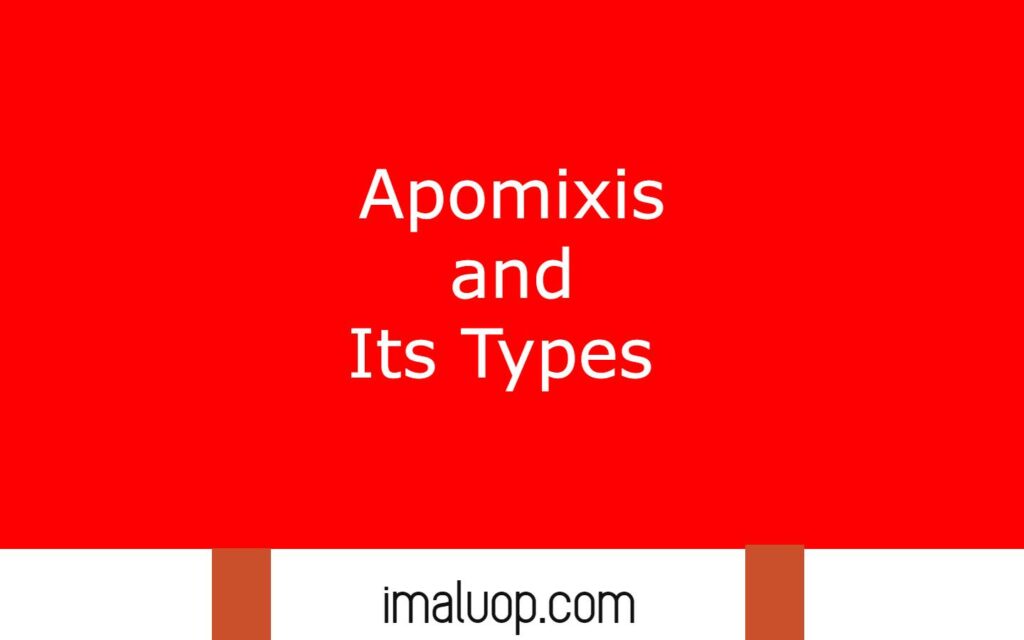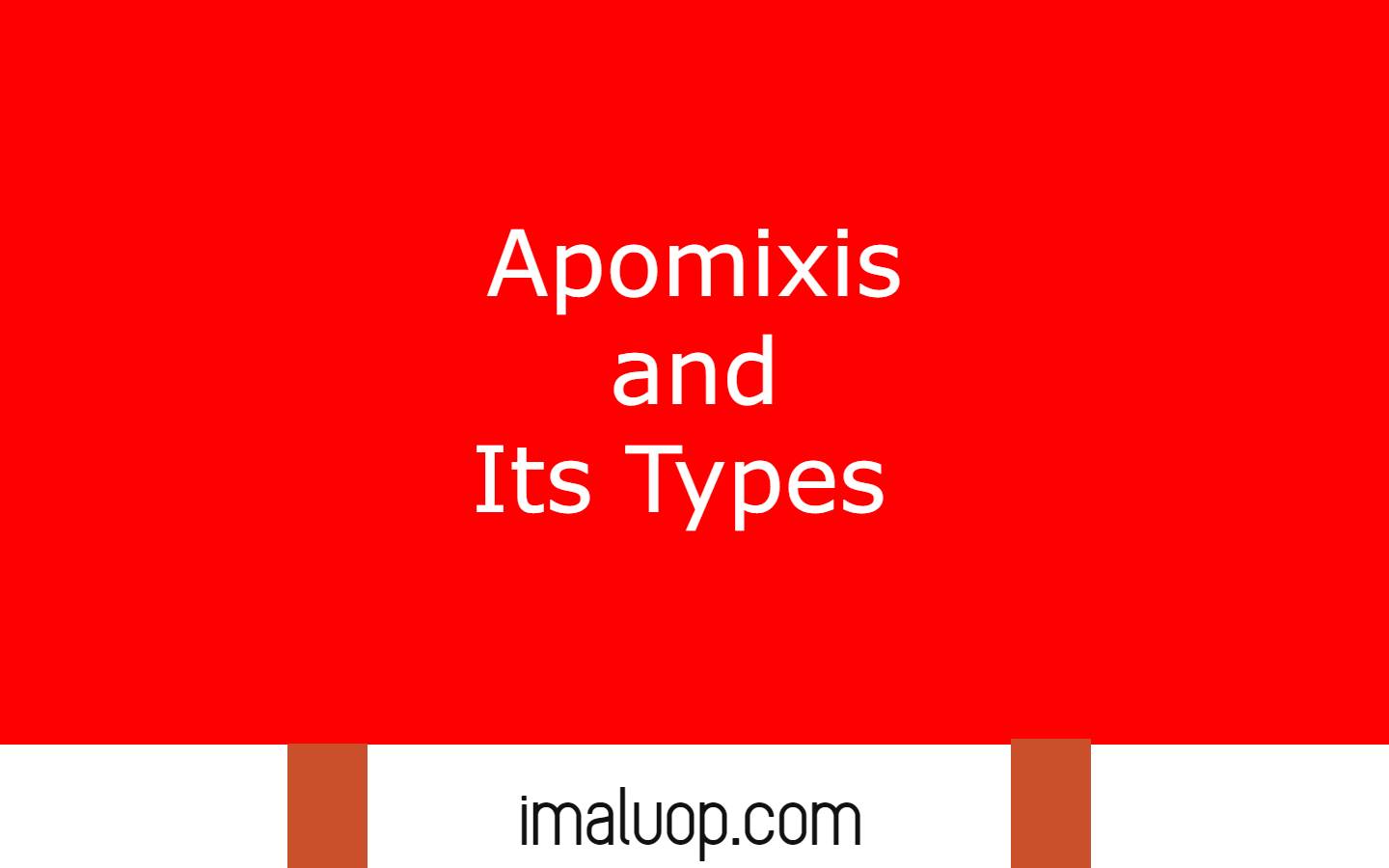Hi, we are going to discuss a special event in plant reproduction apomixis and its types along with the benefits of apomixis.
Table of Contents
What is Apomixis:
Apomixis is a type of seed formation in which fertilization does not occur and the word apomixis suggests without mixing. It is a situation like vegetative reproduction in which the offspring is a clone of the female parent plant.
This method of seed formation without fusion of male and female gametes is common in higher plants. For example, members of the family Rosaceae show apomixis and cereal like wheat, maize show apomixis.
Types of Apomixis:
Apomixis are three types – diplospory, apospory and adventitious polyembryony, we will discuss each type of apomixis one by one below.
Diplospory:
In diplospory embryo sacs can form in two ways – either megaspore mother cells divide mitotically and produce embryo sac or meiosis cell division in megaspore mother cells restricted and produce embryo sac.
In mitotic diplospory megaspore the mother cell divides three times mitotically to produce 8 nuclei and the embryo sac remains in an unreduced state where the number of chromosomes remain the same.
Apospory:
Apospory is a process of apomixis where the embryo sac formed from nucellar cells and most of the higher plants show this type of apomixis. Differentiated aposporos initial cells divide mitotically to form embryo sacs and sometimes more than one embryo sacs are produced in apospory.
Adventitious Embryony:
It is the development of embryo sac from which it should not be formed, in this case embryo sac develop from nucellus or the embryo sac formation occurs from the integument of the ovary. Mitotic division creates a bud-like structure which forms embryos later in this type of apomixis.
Vegetative Apomixis:
In flowering plants flowers are generally formed in inflorescence but in some cases flowers are not produced in inflorescence instead of flowers bud or vegetative bulbils are formed in the inflorescence. These bulbils of bud give rise to new plants which resemble vegetative reproduction as seen in the case of Agave, Fragaria and Poa.
Recurrent Apomixis:
In this type of apomixis embryo sacs develop from megaspore mother cells and embryo as well as eggs cells are diploid.
Non Recurrent Apomixis:
In this type of apomixis embryo sac formation occurs directly from the eggs cells and no fertilization occurs but in this case embryo as well as eggs cells are haploid.
Benefits of Apomixis:
Apomixis is very useful for production of improved varieties in agriculture because it can produce a large number of seeds which have similar genetic characters and hybrid vigour is perpetuated in this method.
Apomixis can be used for production of a large number of seeds of superior crops within a very short time span and it helps breeders in lowering their cost for advanced seed production. It helps the breeders to avoid various complications like arrangements of pollination and possibility of viral diseases spread during breeding.
Apomixis is used for production of high yielding pure line within a very short time span by the process of parthenogenesis which produces haploid plant but colchicine treatment causes diploid plant which can be used as pure line.
Apomixis is very helpful to maintain the same genotype for a long time generation to generation without losing any characters and also maintain hybrid vigour generation to generation.

So apomixis is very helpful in agriculture and breeding industry to produce high quality crops plant variety and also maintain its purity generation after generation by conservation of hybrid vigour or heterosis and help the breeders various complications which are common in other processes of breeding like pollination, cross compatibility and it is a time and cost savings method.
Reference: Apomixis and Its Types
Read More: Differences Between Apoplast and Symplast
Hi Everyone!!! Welcome to Imaluop. Imaluop always try to learn some new and he want to share to other people. Here we will try to learn various topics on Science, specially on Biological Sciences.
